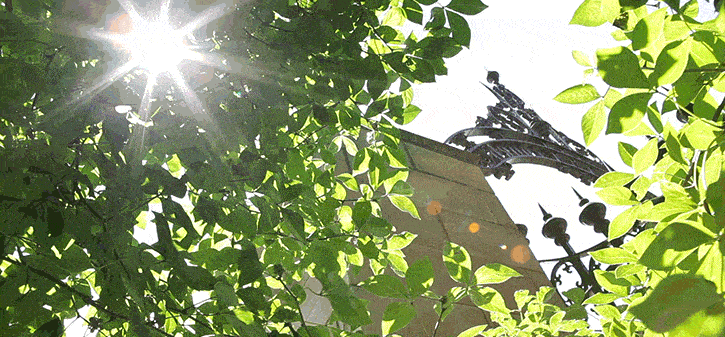
(Animation by Anthony Arciero)
The University’s botanic garden celebrates its 20th anniversary.
When George Beadle became president of the University in 1961, he was horrified by the state of the landscaping. “The weedy lawns, scarred with brown spots or patches of raw dirt,” his wife, Muriel McClure Beadle, wrote in a memoir, “had the weathered look of a city tomcat who is still alive only because he has become tough enough to beat the odds.”
Beadle, a Nobel Prize–winning geneticist and enthusiastic gardener, set a modest goal: to grow grass on the center circle of the main quadrangle. When the standard “Keep off the grass” signs were ignored, the Beadles and a group of coconspirators resorted to academic in-jokes: “Don’t tread on me,” “That’s turf,” “Ou sont les tapis d’autrefois?,” “Shame may restrain what the law does not prohibit.” Passersby were entertained enough to walk around the circle—there were no sidewalks crossing it then—and the grass grew.
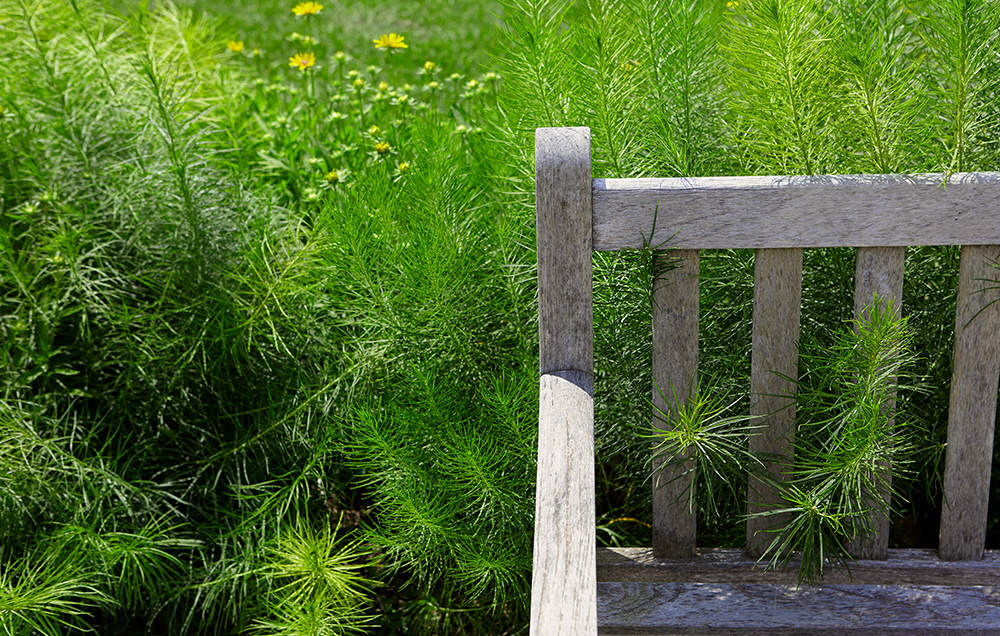
By 1983, when Richard Bumstead accepted a planning job in Facilities Services, the landscape was little improved: “poorly maintained lawn and ignored trees,” he says. Bumstead had just finished his master’s in landscape architecture at the University of Illinois at Urbana-Champaign; he’s been at UChicago ever since. As Bumstead designed the landscaping around the new buildings of the time—Crerar Library, Kersten Physics Teaching Center—he dreamed of transforming the entire 217-acre campus into a botanic garden.
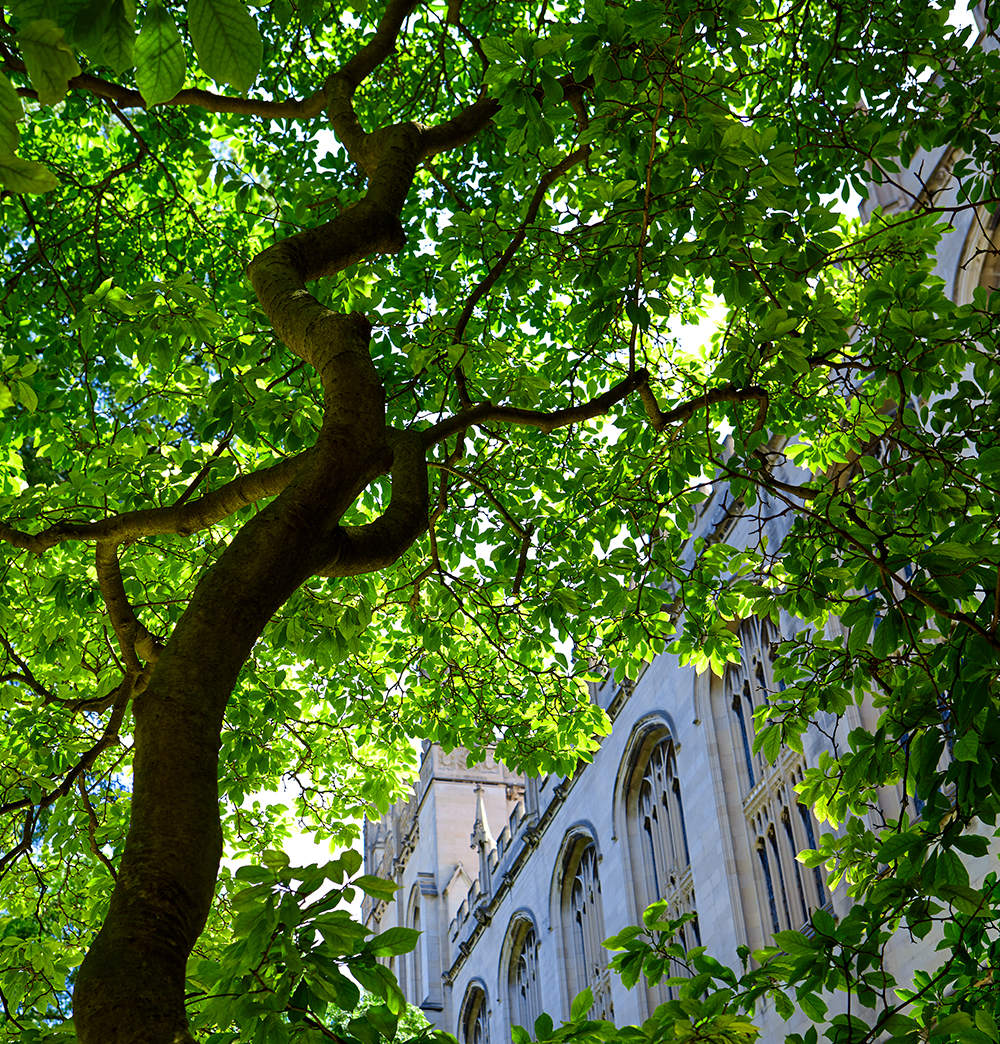
In 1996 president Hugo Sonnenschein (that’s German for “sunshine”) agreed to improvements to the long-neglected landscape. A year later, the campus was given official botanic garden designation by what is now known as the American Public Gardens Association. The APGA asks its member gardens to meet five criteria: the collection of plants must be labeled; records of plants must be kept; the garden must be open to the public; the garden must function as an aesthetic display, educational display, or research site; and there must be at least one professional staff member. While many colleges and universities have botanic gardens or arboretums, UChicago is unusual in that its entire campus is a botanic garden. Swarthmore College’s Scott Arboretum, which also encompasses the whole campus, served as an inspiration and a model.
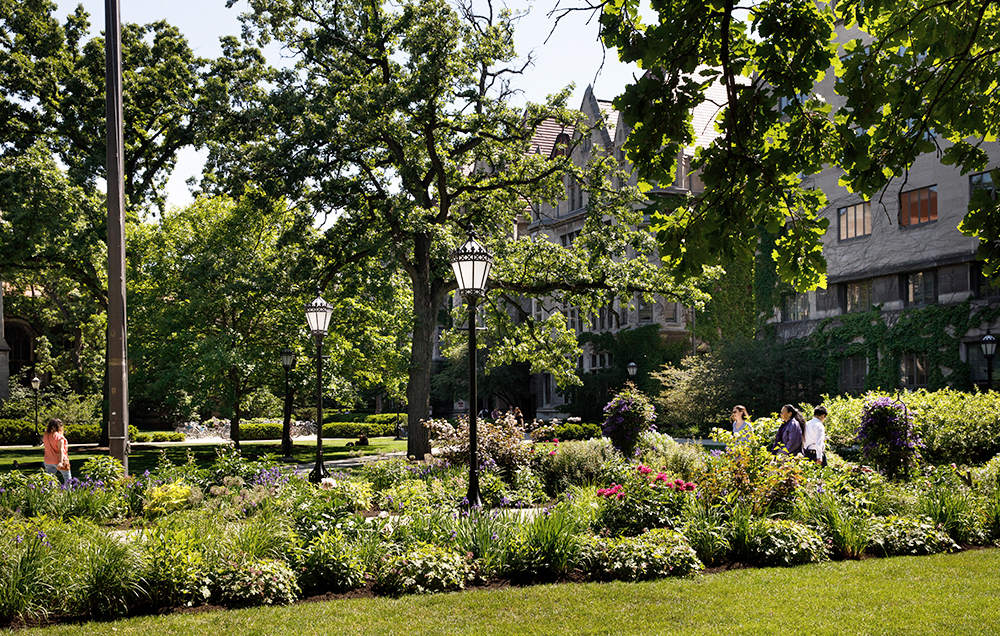
Kramer beds
Bumstead, now associate director of the campus environment, “started small,” he says, with the Kramer beds (above) lining the walkway to Levi Hall, the administration building. Installed in 1973, the flower beds were a gift from the late trustee emeritus Ferdinand Kramer, LAB’18, PhB’22, in memory of his wife, Stephanie Shambaugh Kramer, a landscape architect. Bumstead had the beds widened from three feet to six feet, added a lush variety of plants, and installed containers and tuteurs.
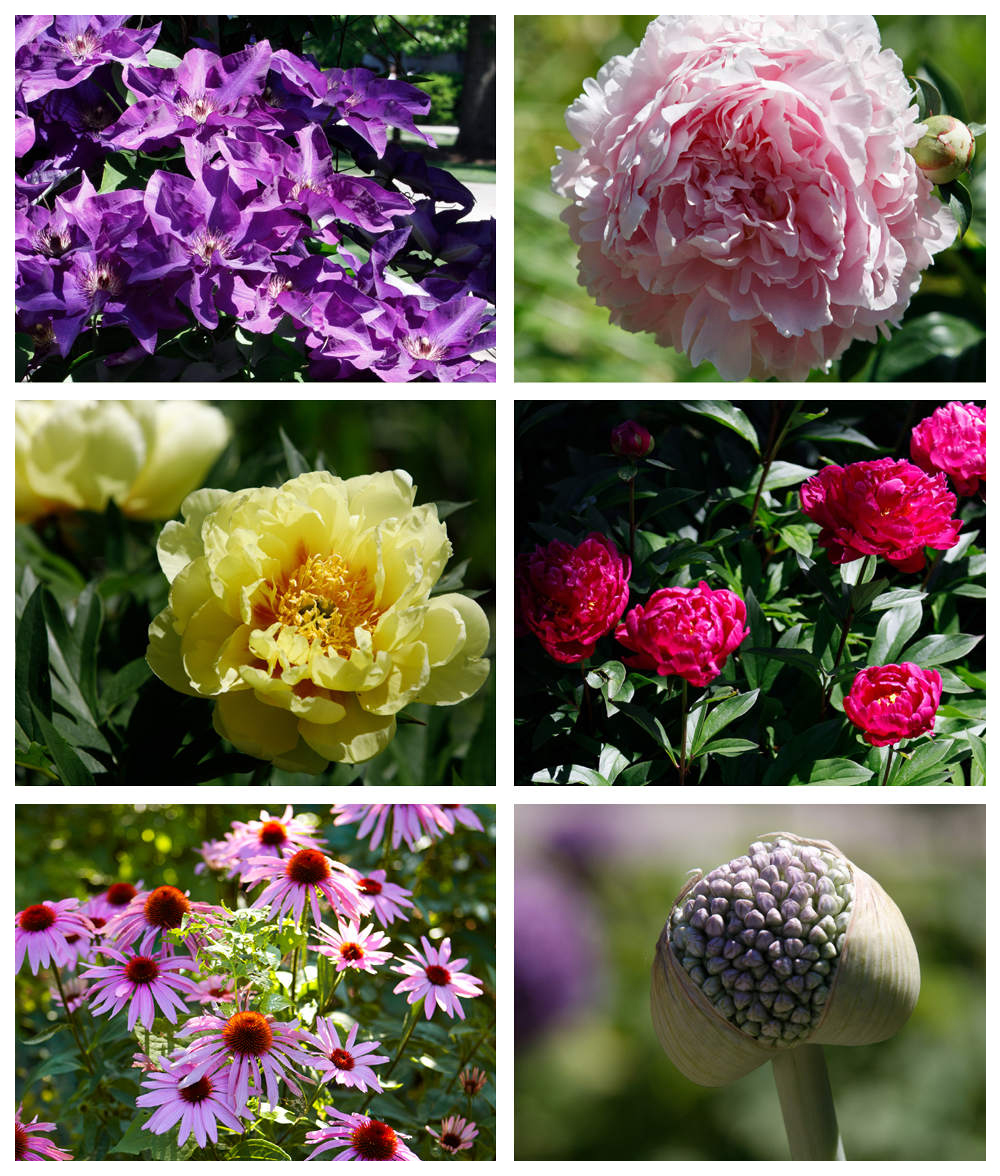
Don’t walk on the grass—please
Next came low yew hedges, which defined the garden areas and lined the sidewalks cutting through the quadrangles. The hedges along the sidewalks look pretty. But their secret purpose is to keep walkers on the sidewalk where they belong, so the grass near the sidewalk edges doesn’t get trampled. Before, these unofficial cow paths turned to mud when it rained. “Lawn is lawn,” says Bumstead. “It’s meant to be walked on. But I try to discourage going on the same path day after day.”
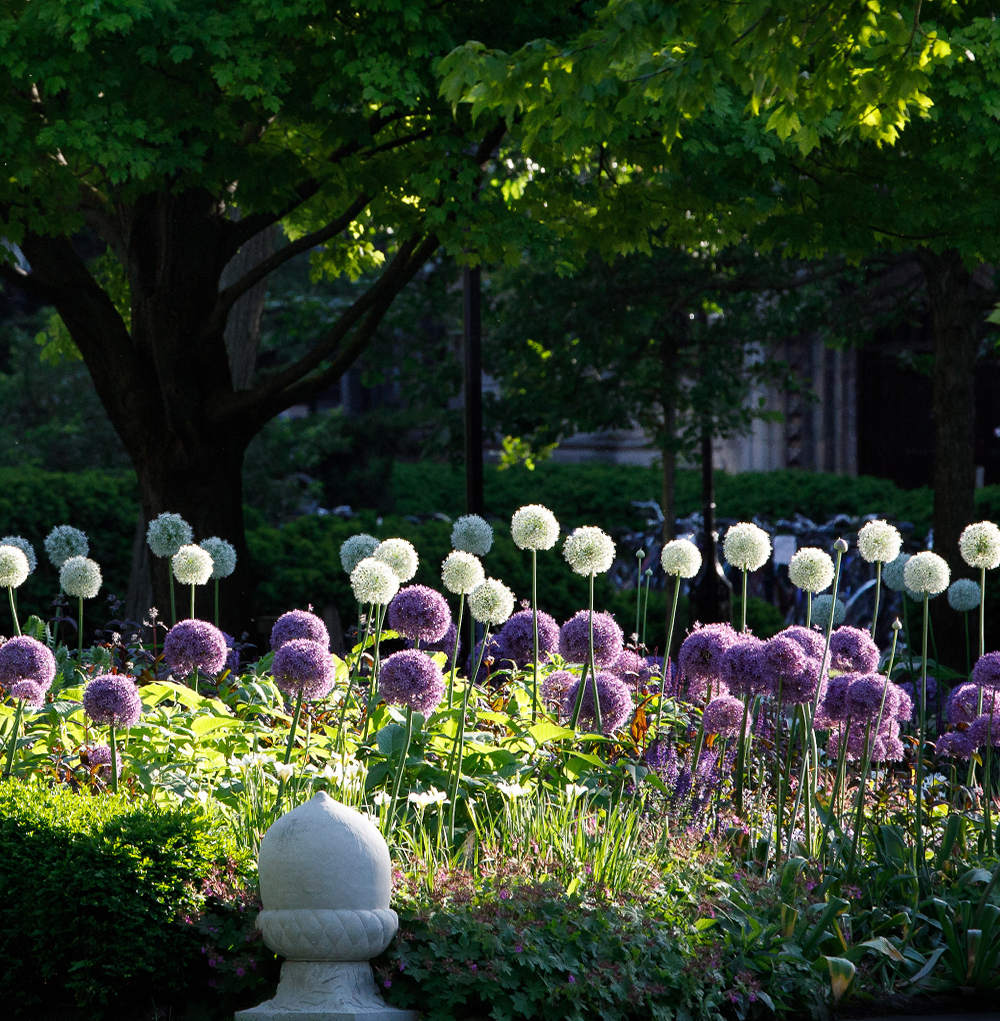
Circle garden
With the cow paths obliterated, Bumstead turned his attention to the circle garden. Originally he imagined an enormous fountain, 50 feet in diameter, that would fill the entire space. “We thought this was a great gift opportunity for someone,” he says, but no donor was forthcoming. And now that convocation is held on the quadrangles rather than in Rockefeller Chapel, “I don’t think a large fountain would work especially well.”
The garden is particularly notable for its alliums (above)—the larger, gaudier cousin of chives and garlic—which produce massive blooms during Alumni Weekend and convocation. The flowers look like Dr. Seuss had a hand in their design. When Bumstead first saw alliums, he thought they were the ugliest flowers he had ever seen: “Why would anybody want a round flower? But I’ve gotten really fond of these things.” The eight acorn-shaped garden ornaments—“Don’t call them sculptures”—were installed for pragmatic reasons. At first the yew hedges extended all the way to the sidewalk. But the winter salt killed them.
Bumstead removed the dead sections of hedge and had ornamental grass installed, thinking it would be tougher; it wasn’t. The ornaments are made of cast stone, “a technique that goes back to the Roman days,” he says. “I think they’re just enough whimsy.” Each of those pieces of whimsy weighs several hundred pounds. Nonetheless one of them mysteriously found its way to the Midway in the spring of 2015. “A little bit too much testosterone,” Bumstead suggests.
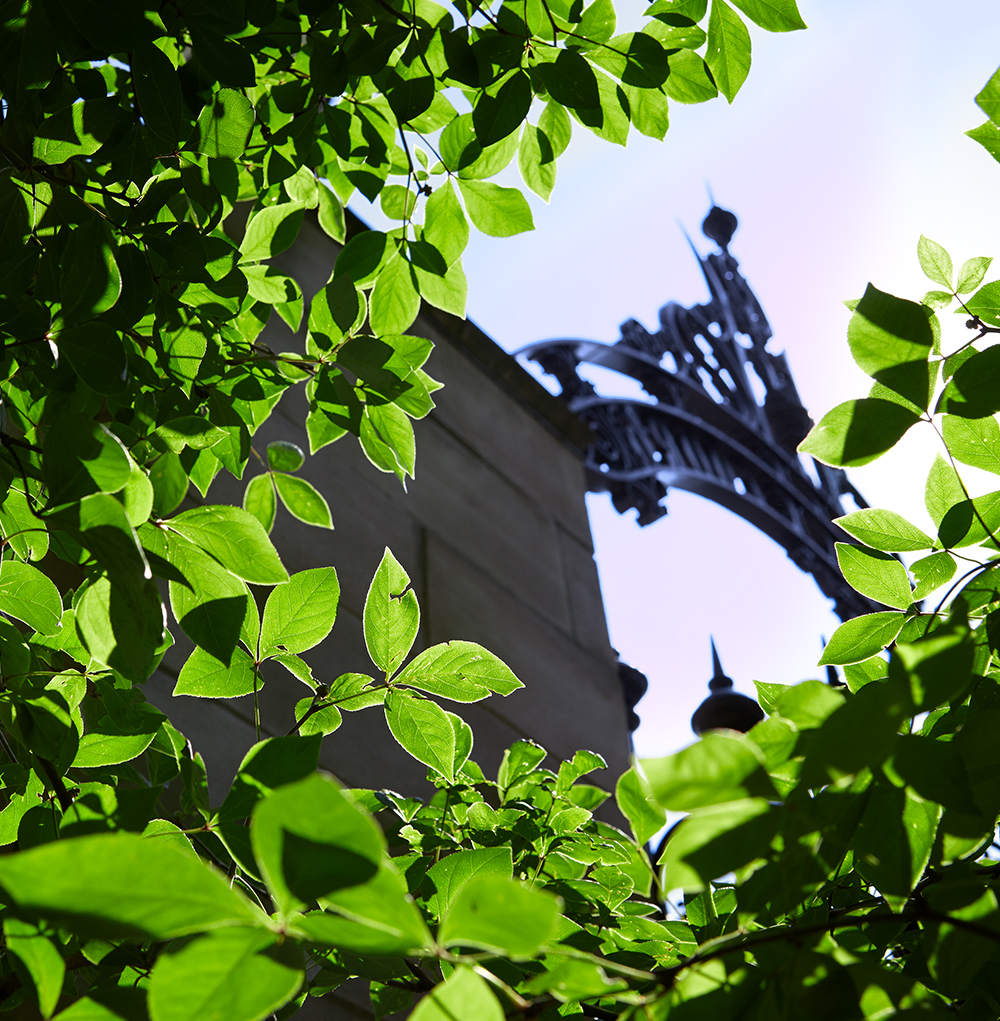
Hull Court
John Merle Coulter, the first chair of the botany department, suggested a campus-wide botanic garden to president William Rainey Harper in the 1890s. Harper demurred. (“It only took us a hundred years to see his dream,” Bumstead says.) But Coulter, who had an extensive private plant collection, was allowed to shape Hull Court, including Botany Pond.
A few of Coulter’s plants are thought to survive today, such as an aralia growing on the east side of Hull Gate (above). During the process of classifying all of the plants on campus, Bumstead asked for assistance from the Morton Arboretum. This variety of aralia is so rare, the arboretum’s expert at first could not identify it.
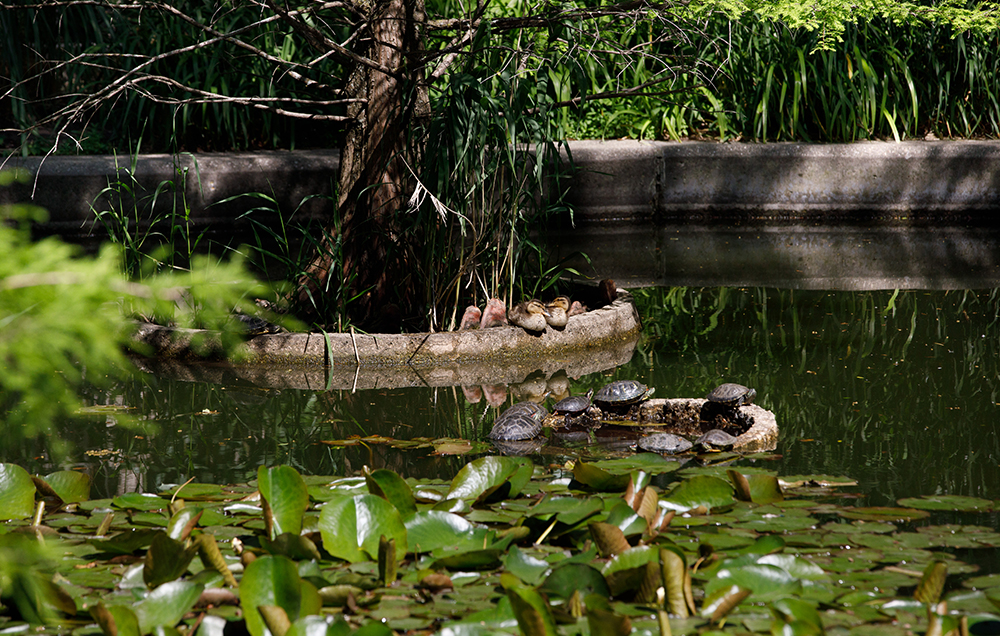
Botany Pond
Botany Pond is such a beloved space, “we have to redo the turf every year,” Bumstead says. Visitors are drawn by the ducklings, the turtles (above), and, in former days, the goldfish. Last spring a blue heron settled in and ate every last one.
In 2004 the University began a major restoration of Hull Court and Botany Pond, with funding from the Julie and Parker Hall Botanic Garden Endowment Fund. The endowment also maintains the Regenstein entry garden, the Law School garden, and other green spaces on campus.
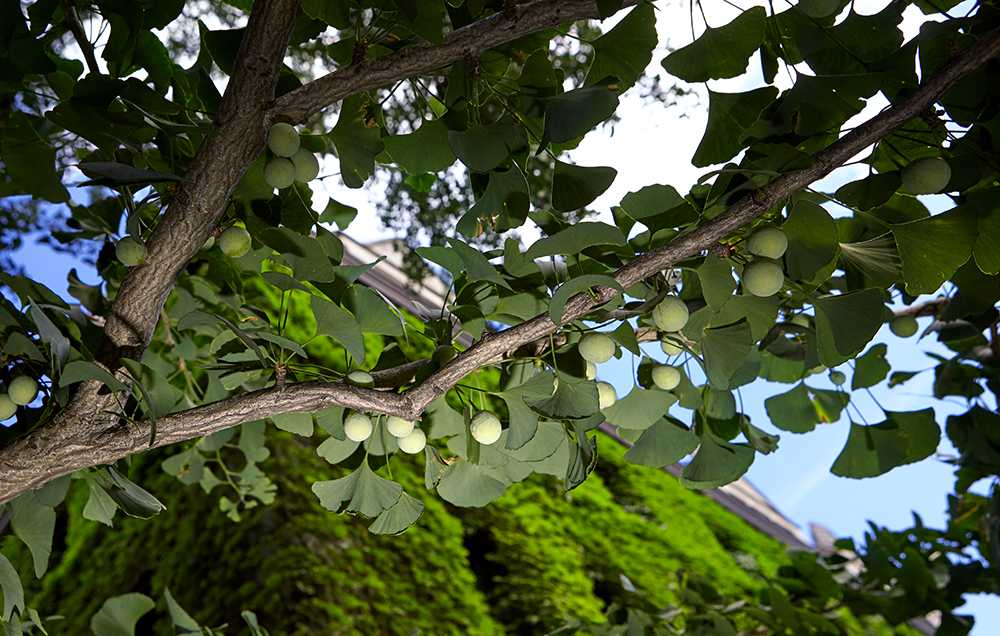
The pond’s least popular plant is a stately ginkgo tree near the sidewalk leading to the cloister (above). It was probably installed by Coulter and unfortunately turned out to be female. In the fall, female ginkgos drop their berries, which emit a stomach-turning stench: “This was always known as the vomit tree,” says Bumstead. Facilities Services installs a canopy every September to catch the noxious fruit and keep people from treading it into the buildings.
Nowadays nurseries sell ginkgos grown from cuttings off a known male tree. But even that is not reliable; the trees, like certain species of fish, can change sex, and they don’t fruit until they are 20 to 25 years old. A few of the ginkgos that Bumstead had planted near Max Palevsky Residential Commons turned out to be female: “Surprise!” he says. “You live near the vomit tree.”
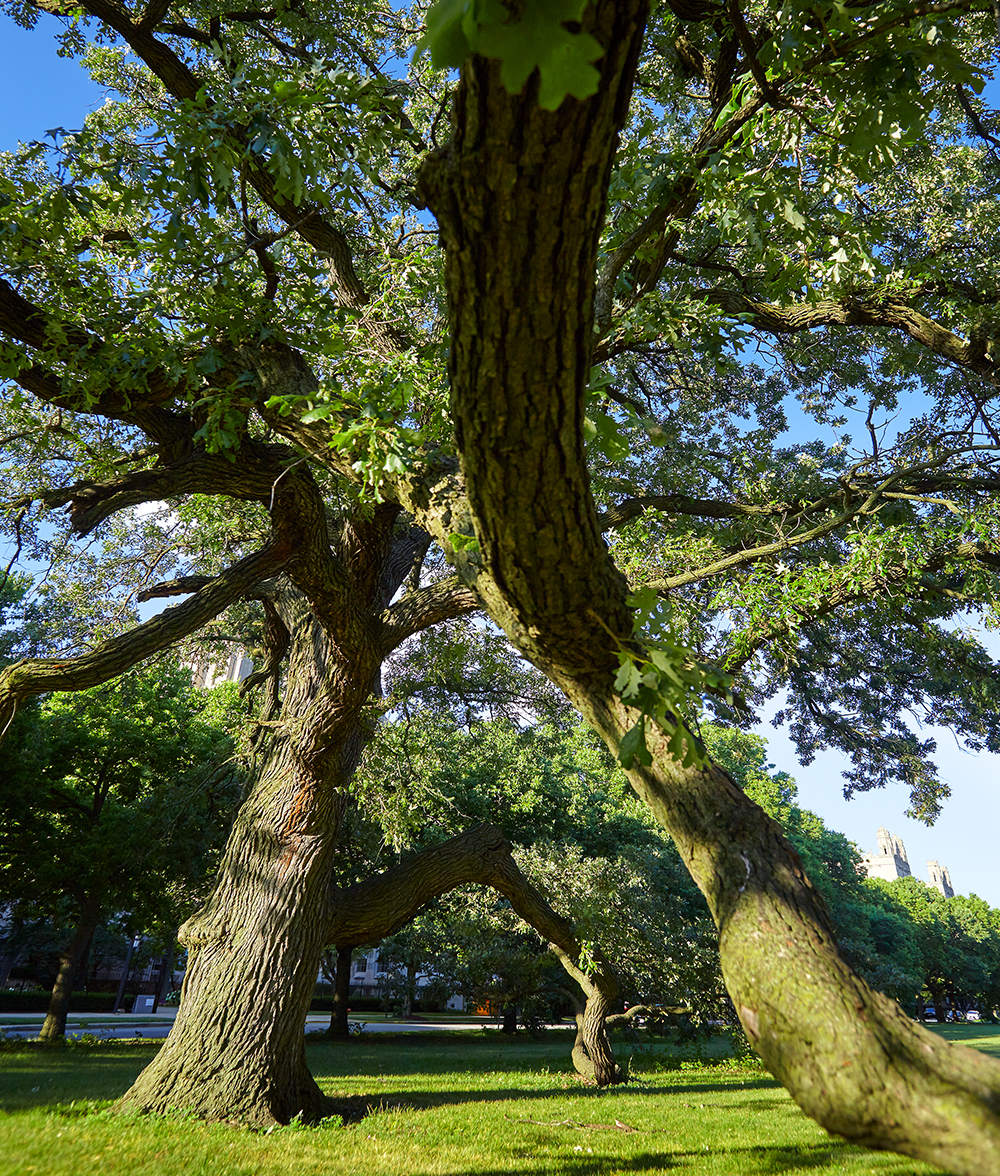
Treaty oak
Among the orderly rows of trees that line the Midway Plaisance, one bur oak stands alone (above). Little is known about the old growth tree, which belongs to the Chicago Park District and probably predates the Midway. John Mark Hansen, Charles L. Hutchinson Distinguished Service Professor in Political Science and a local history expert, says it was marked as “Treaty Oak” on a map he found in an old Hyde Park Herald. No explanation for the name was given.
The patch of land where the oak stands now, across from the medical campus, was the site of the Native American village during the World’s Columbian Exposition of 1893. The tree may be a relic of this exhibit.
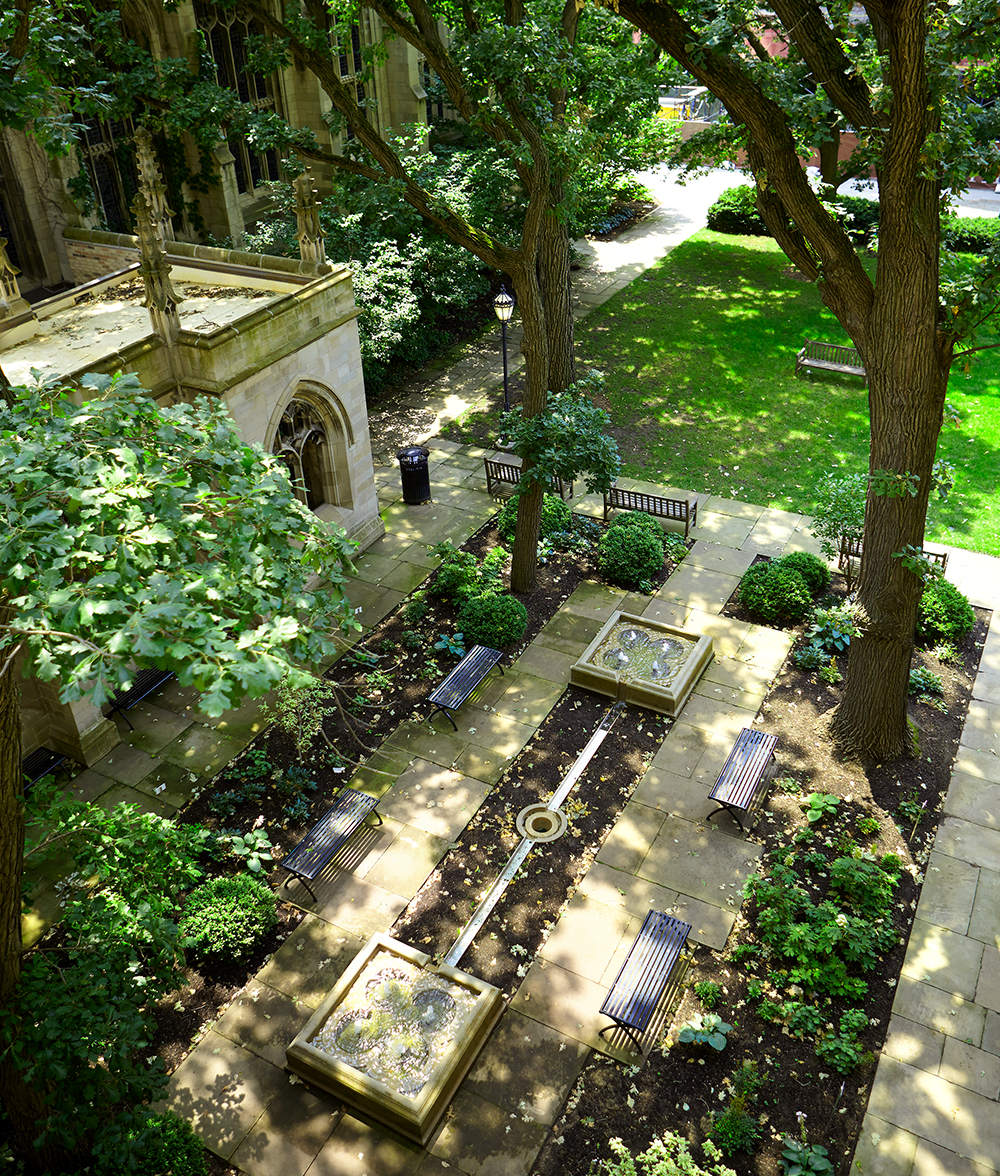
Swift Hall cloister garden
One of Bumstead’s favorite spots is the Swift Hall cloister garden, a pocket garden to the west of Swift Hall (above). It includes three oaks that are older than Swift, which was built in 1926 and designed around them. When Bumstead’s office was on campus, he ate lunch there most days.
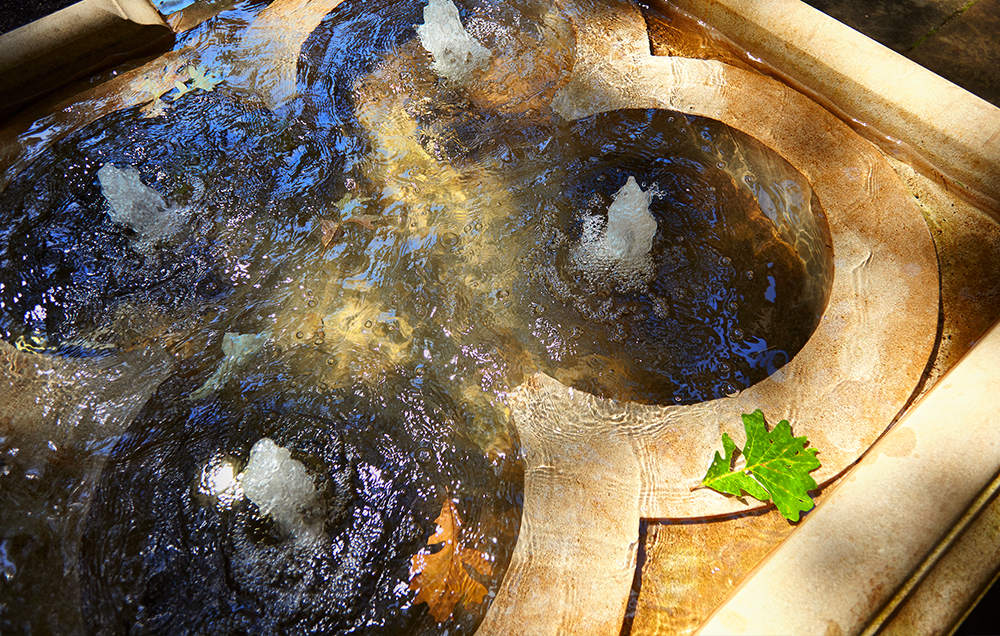
Two years ago Bumstead had a water feature (above) and perennials installed; they’re just beginning to fill in. “We’re about to put in a fence, because I can’t keep people from walking through it,” he says. That’s actually not typical. As the campus landscaping has improved, “people’s care and consideration has also increased. Before it was like, why bother?”
“There’s very little clipping, vandalism. Occasionally I’ll see a student carrying around a daffodil or something, but certainly never a handful,” he says. “You know, that’s okay. I’m not the flower police.”
